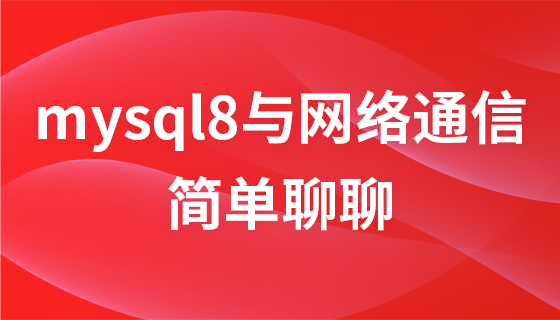将参数从中间件传递到下一个句柄函数
来源:stackoverflow
时间:2024-04-08 12:00:35 114浏览 收藏
在IT行业这个发展更新速度很快的行业,只有不停止的学习,才不会被行业所淘汰。如果你是Golang学习者,那么本文《将参数从中间件传递到下一个句柄函数》就很适合你!本篇内容主要包括##content_title##,希望对大家的知识积累有所帮助,助力实战开发!
问题内容
我想制作一个可重用的中间件,用于在我的 api 中进行验证。在这里,验证是通过 govalidator 完成的,因此我只需要传递验证规则和请求映射到的 dto。
func validationmiddleware(next http.handlerfunc, validationrules govalidator.mapdata, dto interface{}) http.handlerfunc {
return func(rw http.responsewriter, r *http.request) {
utils.setresponseheaders(rw)
opts := govalidator.options{
request: r,
data: &dto,
rules: validationrules,
requireddefault: true,
}
v := govalidator.new(opts)
err := v.validatejson()
if err != nil {
fmt.println("middleware found an error")
err := utils.errorwrapper{
statuscode: 400,
type: "bad request",
message: err,
}
err.throwerror(rw)
return
}
next(rw, r)
}
}
这就是 handlefunc 的样子:
var rules govalidator.MapData = govalidator.MapData{
"name": []string{"required"},
"description": []string{"required"},
"price": []string{"required", "float"},
}
func RegisterItemsRouter(router *mux.Router) {
itemsRouter := router.PathPrefix("/inventory").Subrouter()
itemsRouter.HandleFunc("/", middleware.ValidationMiddleware(addItem, rules, dto.CreateItem{
Name: "",
Description: "",
Price: govalidator.Float64{},
})).Methods("POST")
}
如果没有发现错误,govalidator 会将请求正文解析到 dto 结构中,因此我想将其传递到下一个处理程序中,并避免再次尝试解析正文。
如何将此结构传递给下一个 handlefunc?
正确答案
从代码来看,您似乎将请求传递给验证器选项,验证器从中读取并验证正文。这会带来几个问题:http 请求只能读取一次,因此验证器要么以某种方式返回该未编组的对象,要么您必须在验证它之前读取正文。
对于第二种解决方案,第一件事是验证器必须知道它必须解组到的对象的类型:
func validationmiddleware(next http.handlerfunc, factory func() interface{}, validationrules govalidator.mapdata, dto interface{}) http.handlerfunc {
return func(rw http.responsewriter, r *http.request) {
newinstance:=factory()
data, err:=ioutil.readall(r.body)
json.unmarshal(data,newinstance)
// validate newinstance here
r.withcontext(context.withvalue(r.context(),"data",newinstance))
next(wr,r)
}
}
其中 func 工厂 是一个函数,用于创建将为请求解组的对象实例:
func registeritemsrouter(router *mux.router) {
itemsrouter := router.pathprefix("/inventory").subrouter()
itemsrouter.handlefunc("/", middleware.validationmiddleware(additem, func() interface{} { return &thestruct{}}, rules, dto.createitem{
name: "",
description: "",
price: govalidator.float64{},
})).methods("post")
}
这样,当新请求到来时,将创建 thestruct 的新实例并对其进行解组,然后进行验证。如果验证通过,它将被放入上下文中,以便下一个中间件或处理程序可以获取它:
func handler(wr http.ResponseWriter,r *http.Request) {
item:=r.Context().Value("data").(*TheStruct)
...
}文中关于的知识介绍,希望对你的学习有所帮助!若是受益匪浅,那就动动鼠标收藏这篇《将参数从中间件传递到下一个句柄函数》文章吧,也可关注golang学习网公众号了解相关技术文章。
声明:本文转载于:stackoverflow 如有侵犯,请联系study_golang@163.com删除
相关阅读
更多>
-
502 收藏
-
502 收藏
-
501 收藏
-
501 收藏
-
501 收藏
最新阅读
更多>
-
139 收藏
-
204 收藏
-
325 收藏
-
478 收藏
-
486 收藏
-
439 收藏
-
357 收藏
-
352 收藏
-
101 收藏
-
440 收藏
-
212 收藏
-
143 收藏
课程推荐
更多>
-

- 前端进阶之JavaScript设计模式
- 设计模式是开发人员在软件开发过程中面临一般问题时的解决方案,代表了最佳的实践。本课程的主打内容包括JS常见设计模式以及具体应用场景,打造一站式知识长龙服务,适合有JS基础的同学学习。
- 立即学习 543次学习
-

- GO语言核心编程课程
- 本课程采用真实案例,全面具体可落地,从理论到实践,一步一步将GO核心编程技术、编程思想、底层实现融会贯通,使学习者贴近时代脉搏,做IT互联网时代的弄潮儿。
- 立即学习 516次学习
-

- 简单聊聊mysql8与网络通信
- 如有问题加微信:Le-studyg;在课程中,我们将首先介绍MySQL8的新特性,包括性能优化、安全增强、新数据类型等,帮助学生快速熟悉MySQL8的最新功能。接着,我们将深入解析MySQL的网络通信机制,包括协议、连接管理、数据传输等,让
- 立即学习 500次学习
-

- JavaScript正则表达式基础与实战
- 在任何一门编程语言中,正则表达式,都是一项重要的知识,它提供了高效的字符串匹配与捕获机制,可以极大的简化程序设计。
- 立即学习 487次学习
-

- 从零制作响应式网站—Grid布局
- 本系列教程将展示从零制作一个假想的网络科技公司官网,分为导航,轮播,关于我们,成功案例,服务流程,团队介绍,数据部分,公司动态,底部信息等内容区块。网站整体采用CSSGrid布局,支持响应式,有流畅过渡和展现动画。
- 立即学习 485次学习
